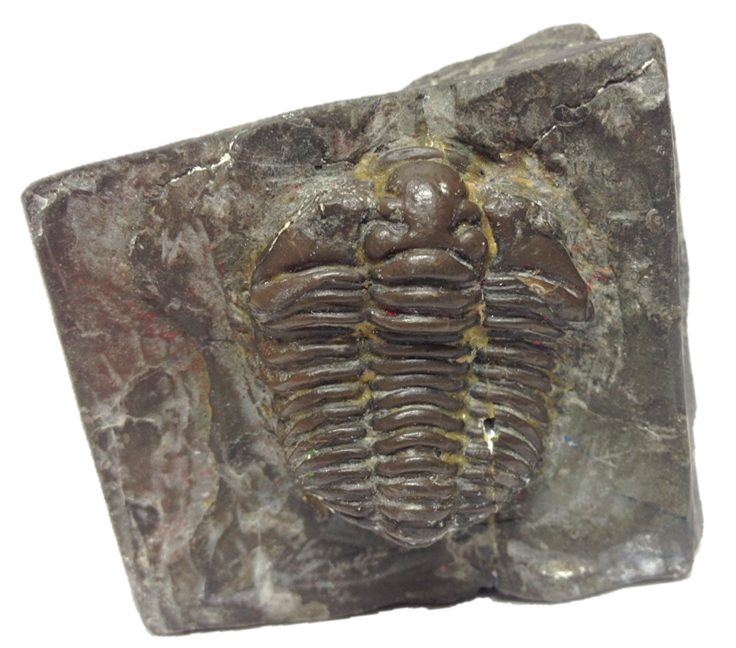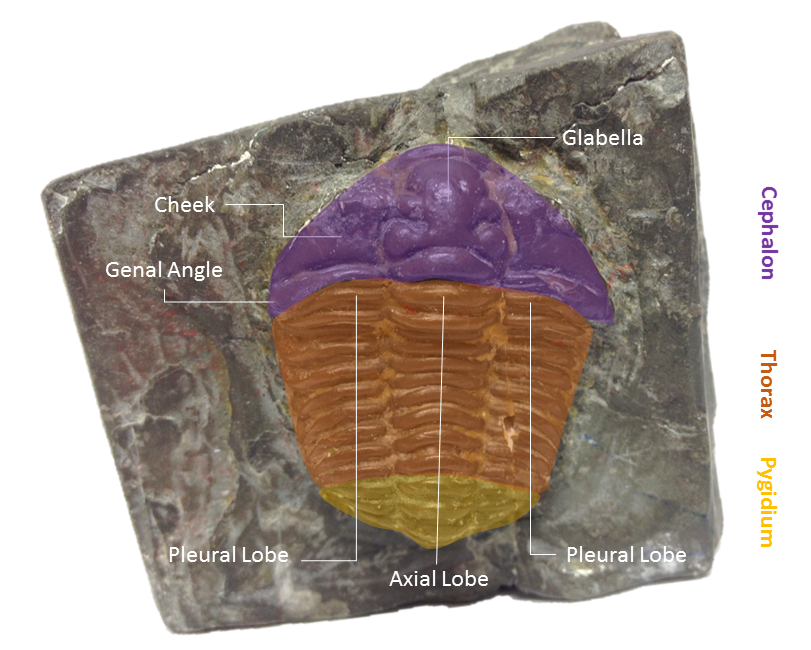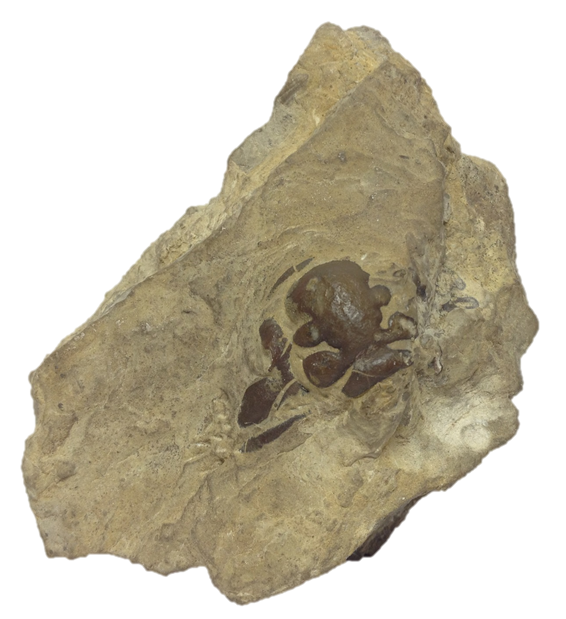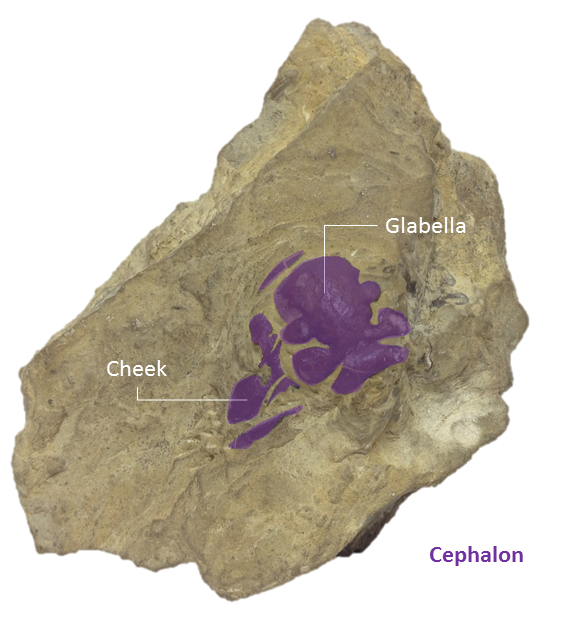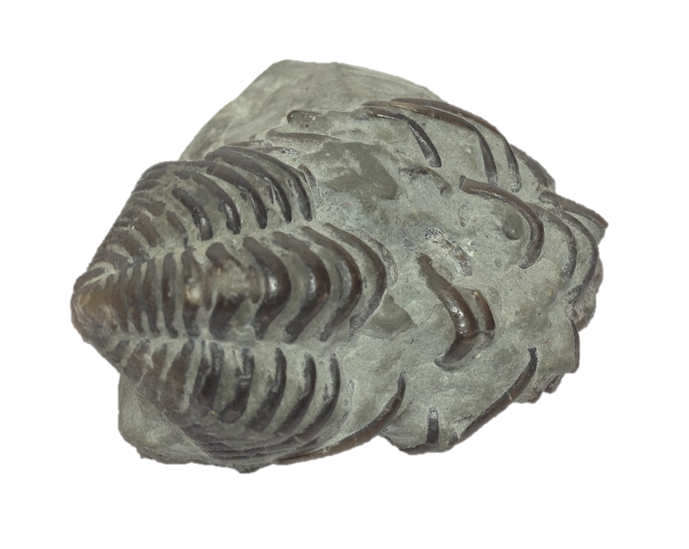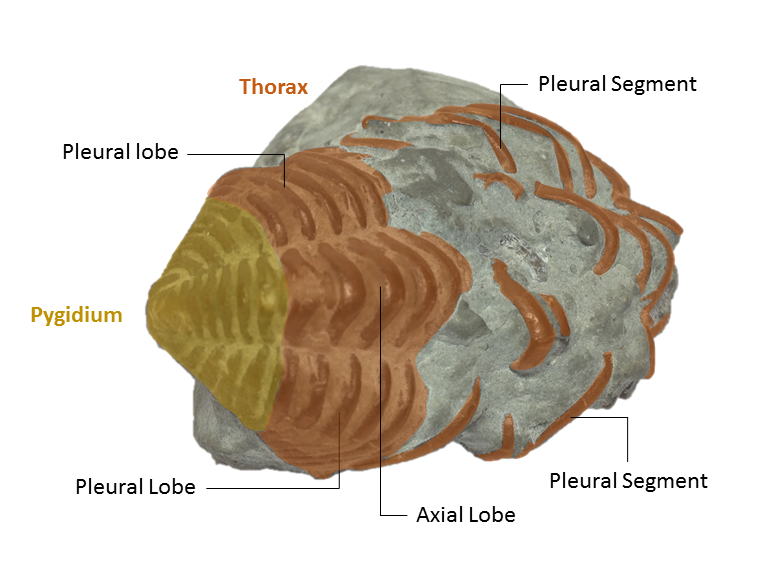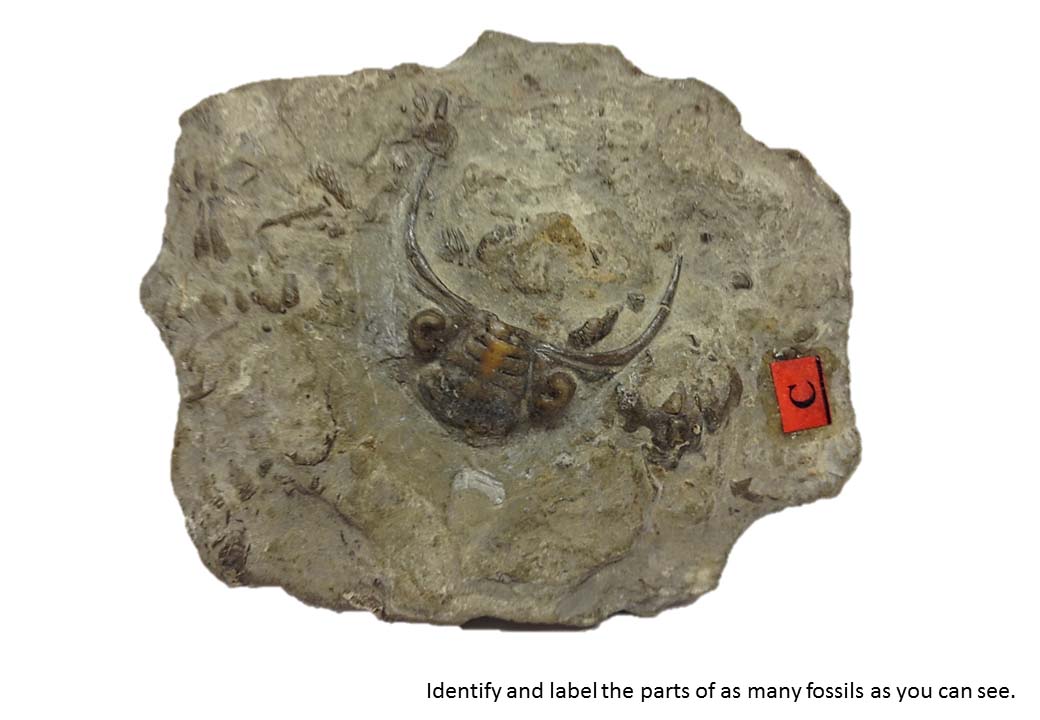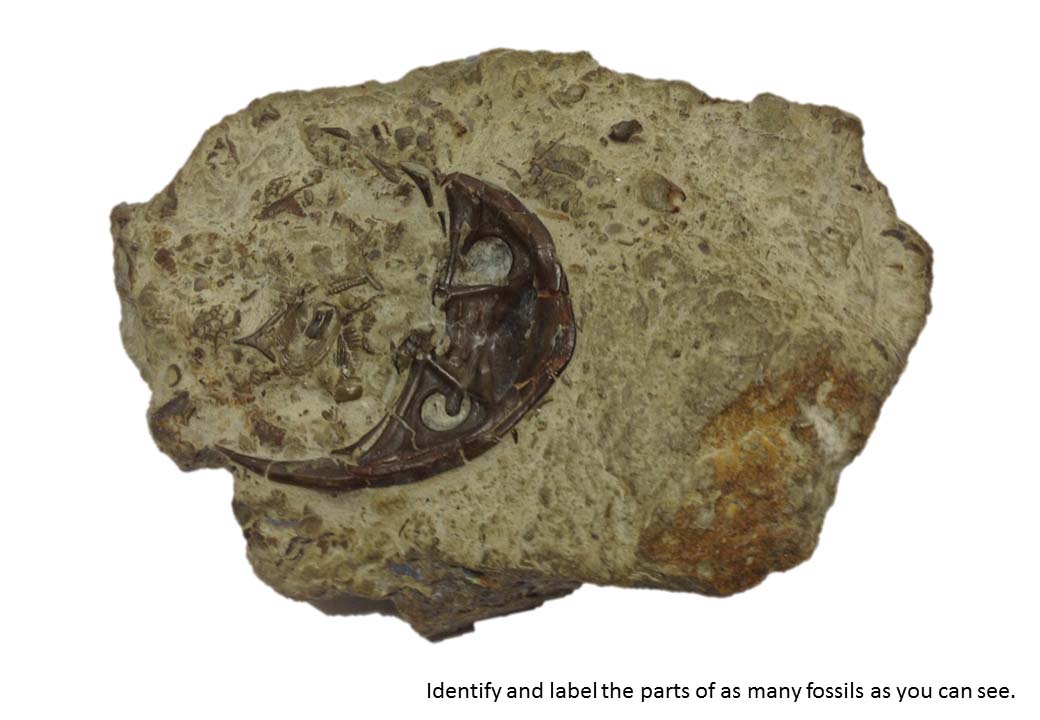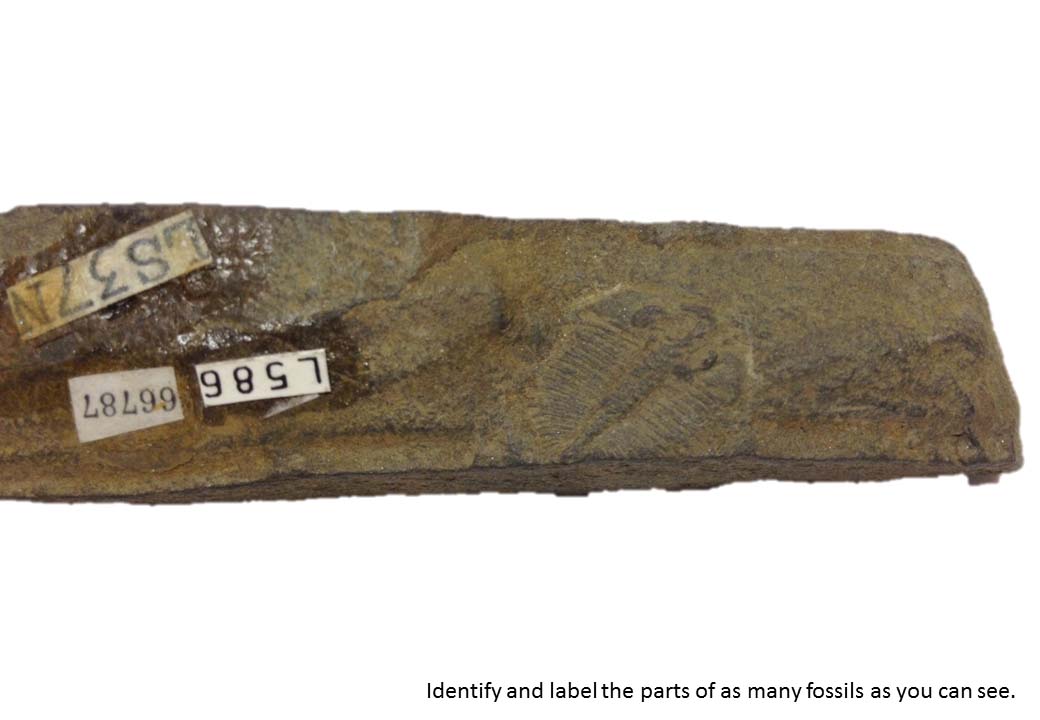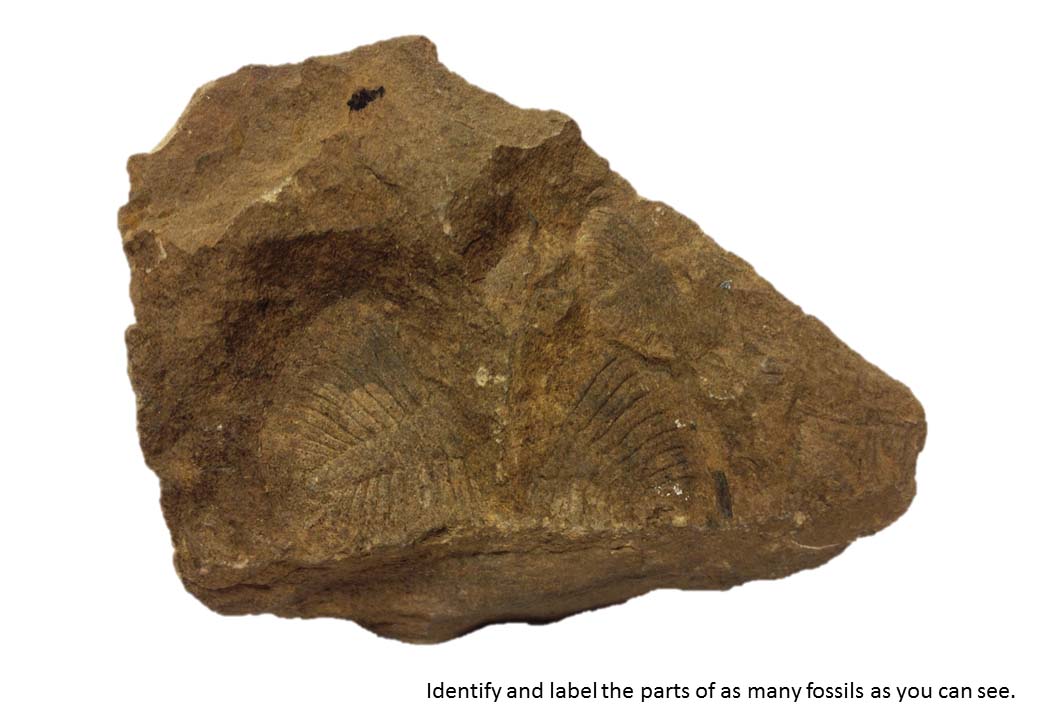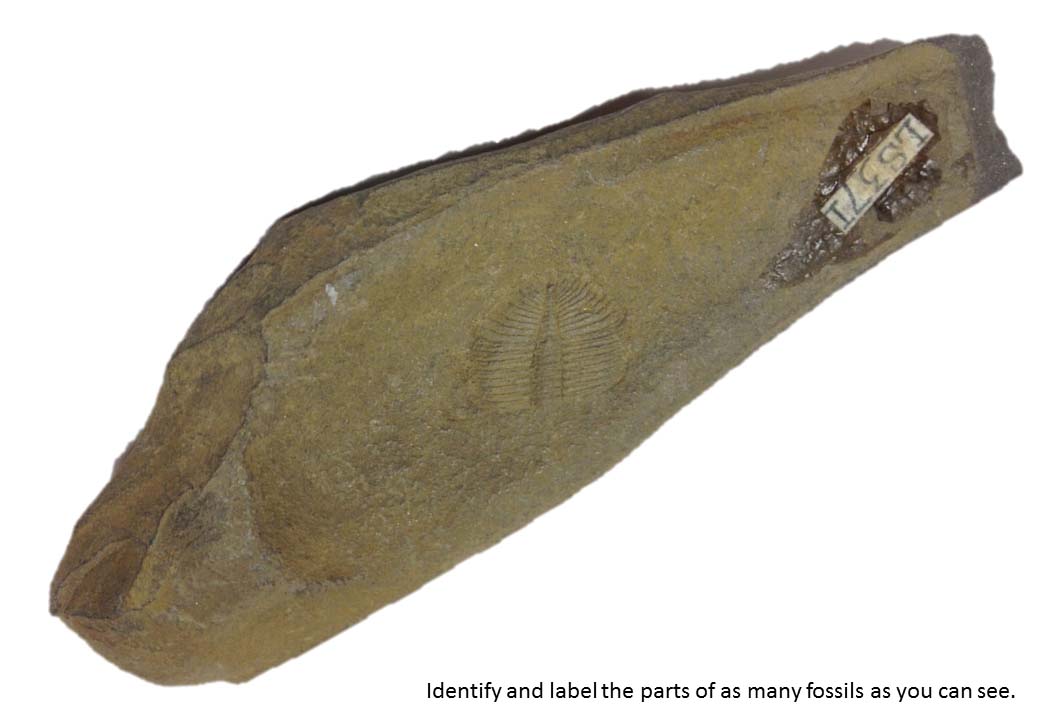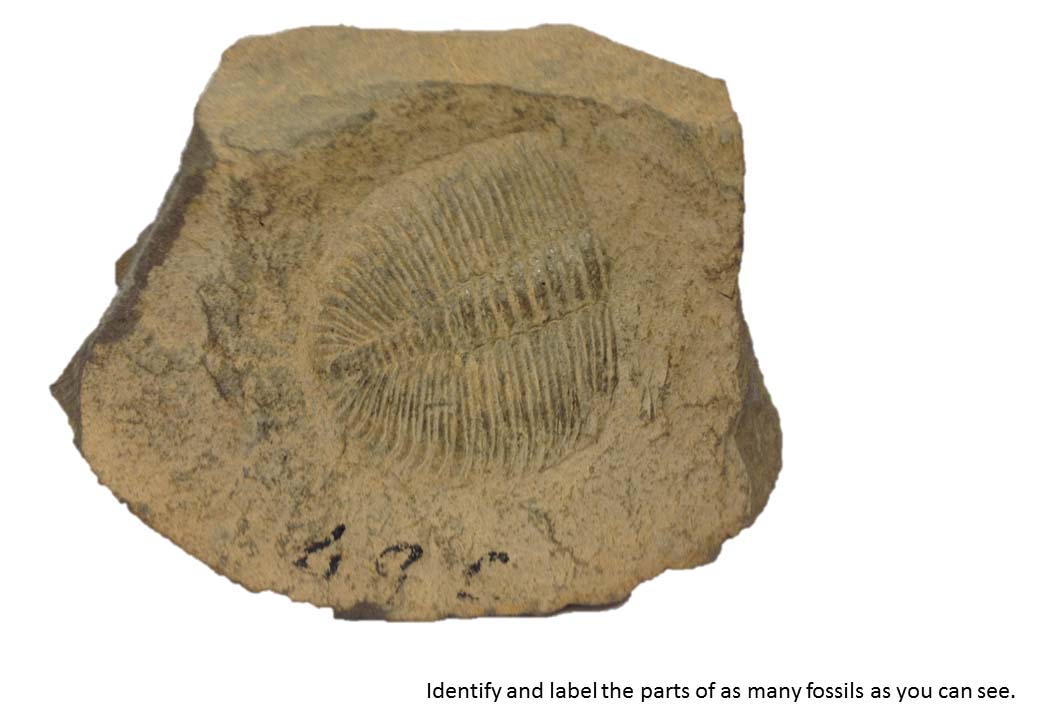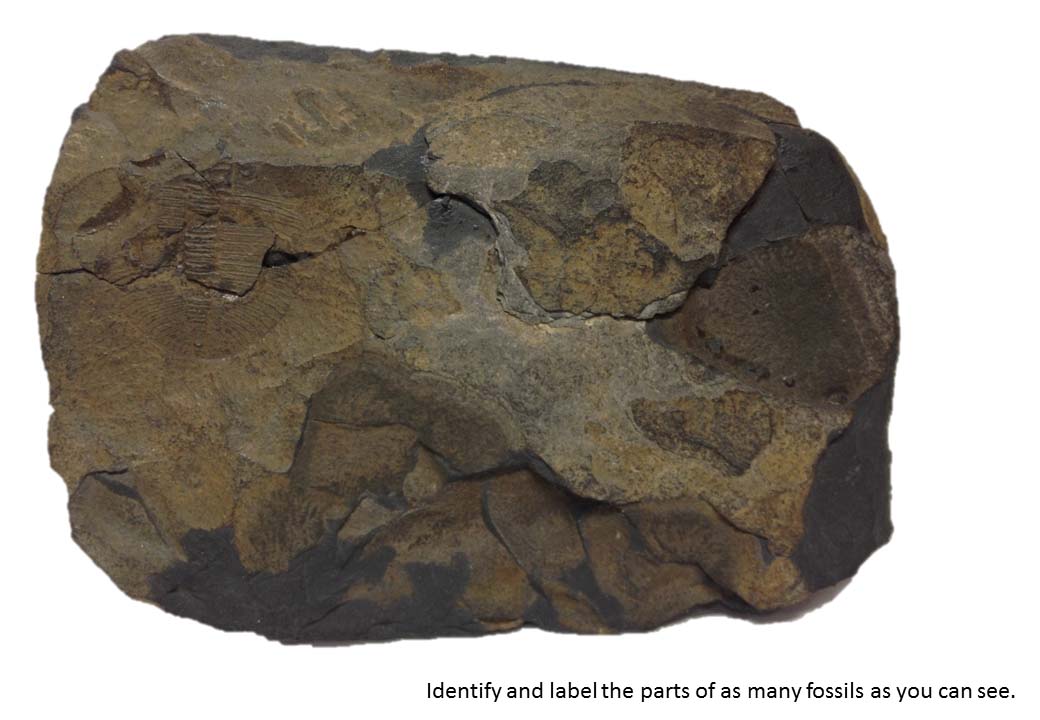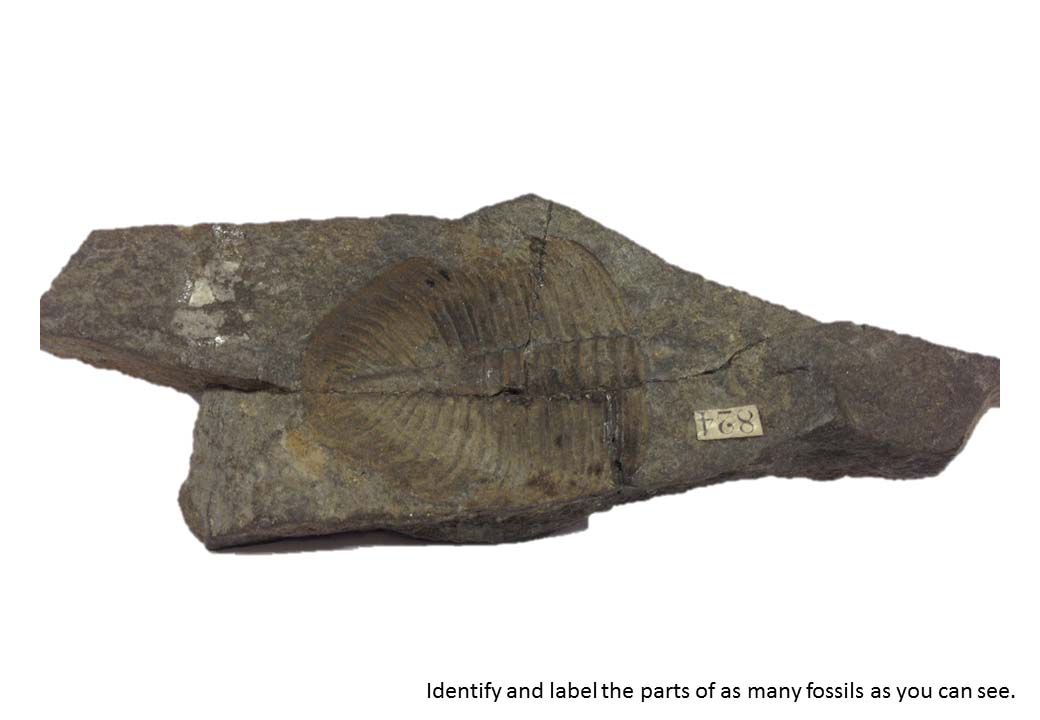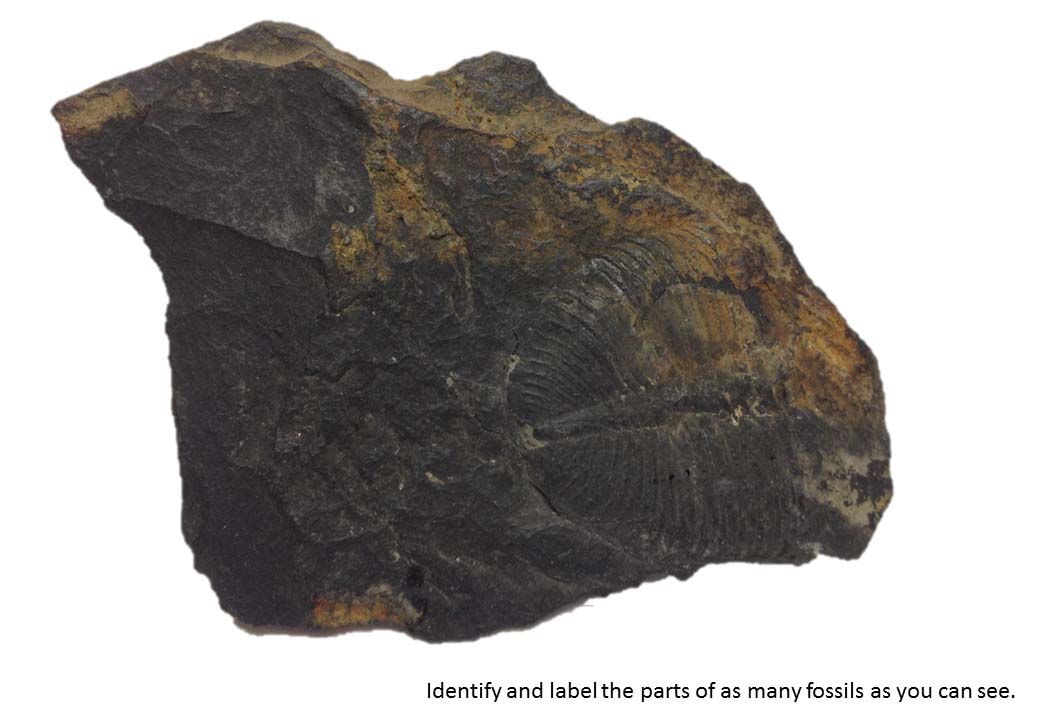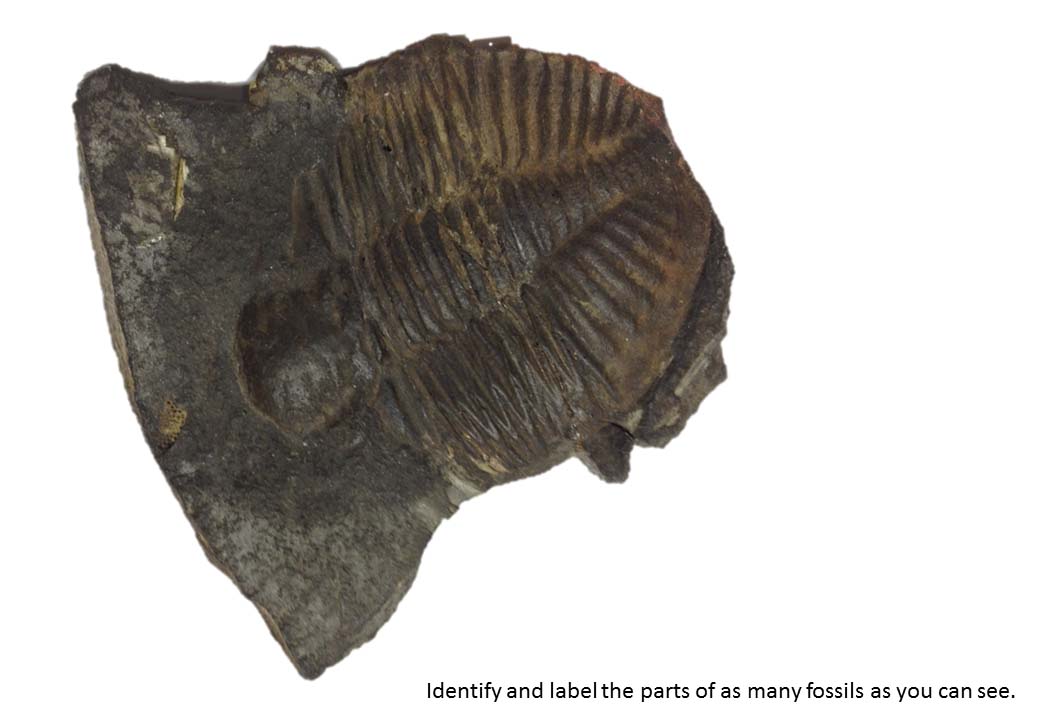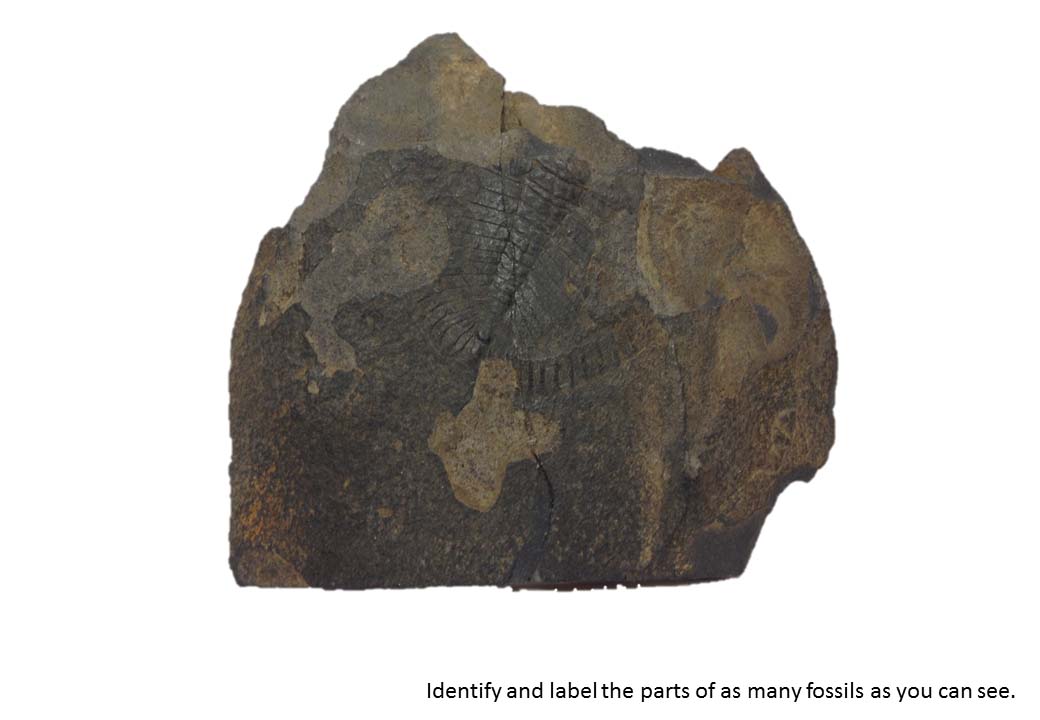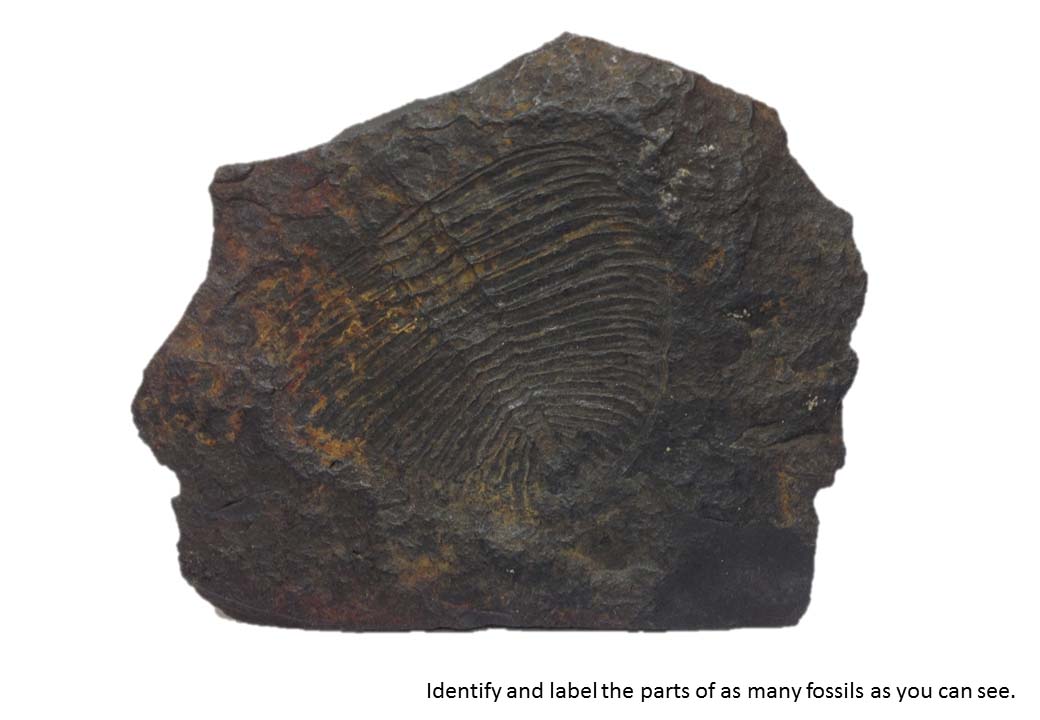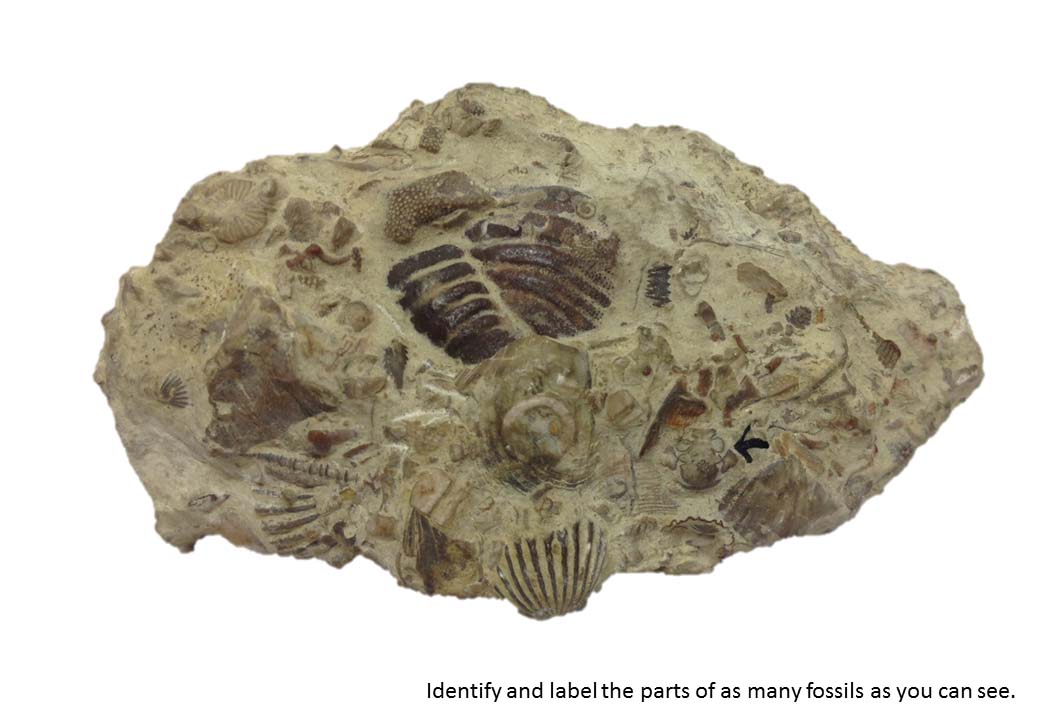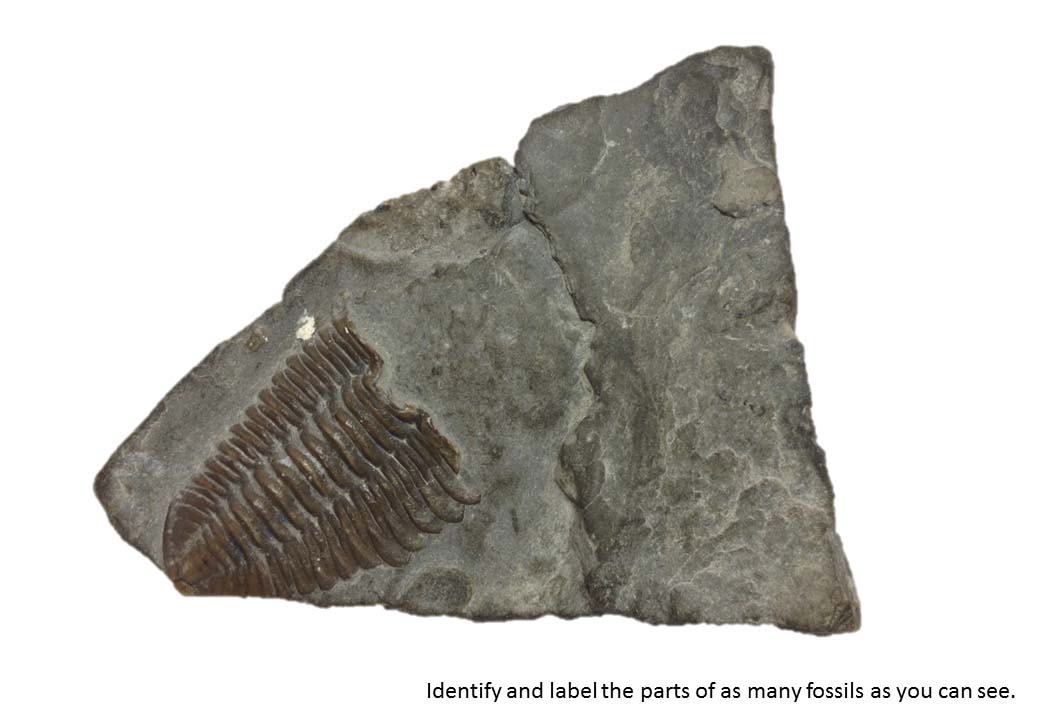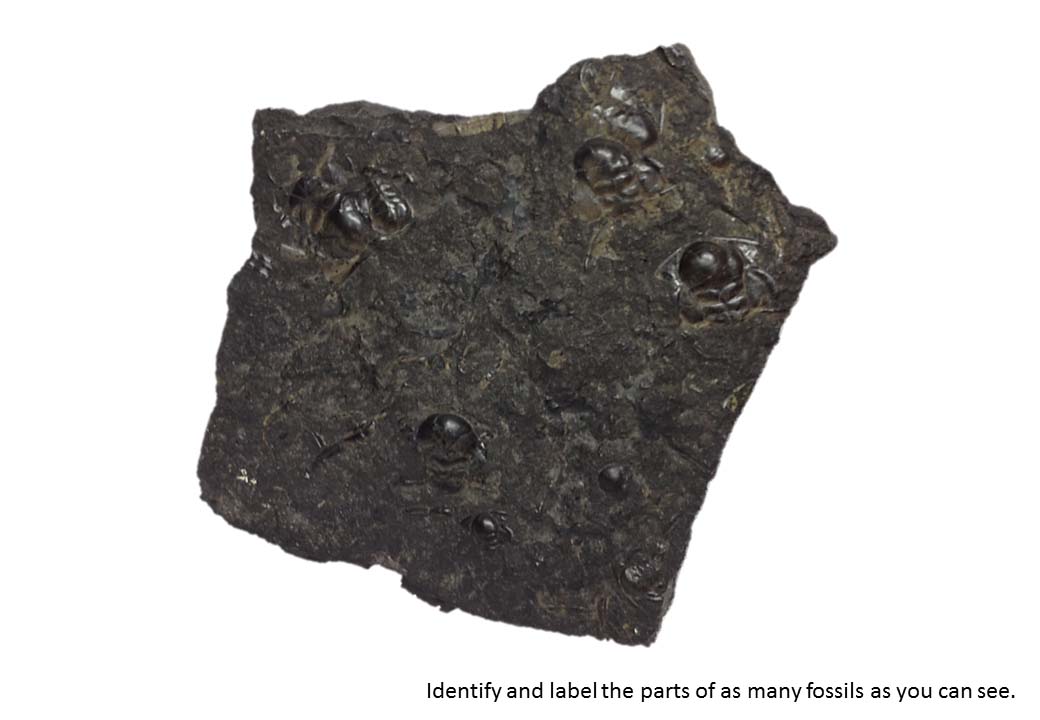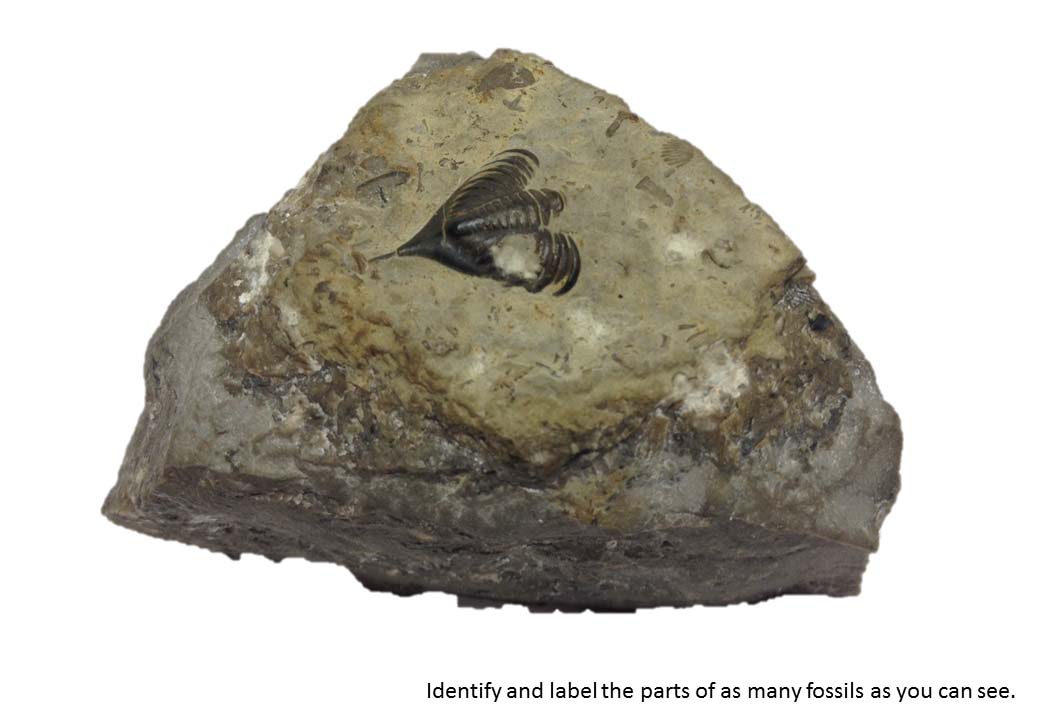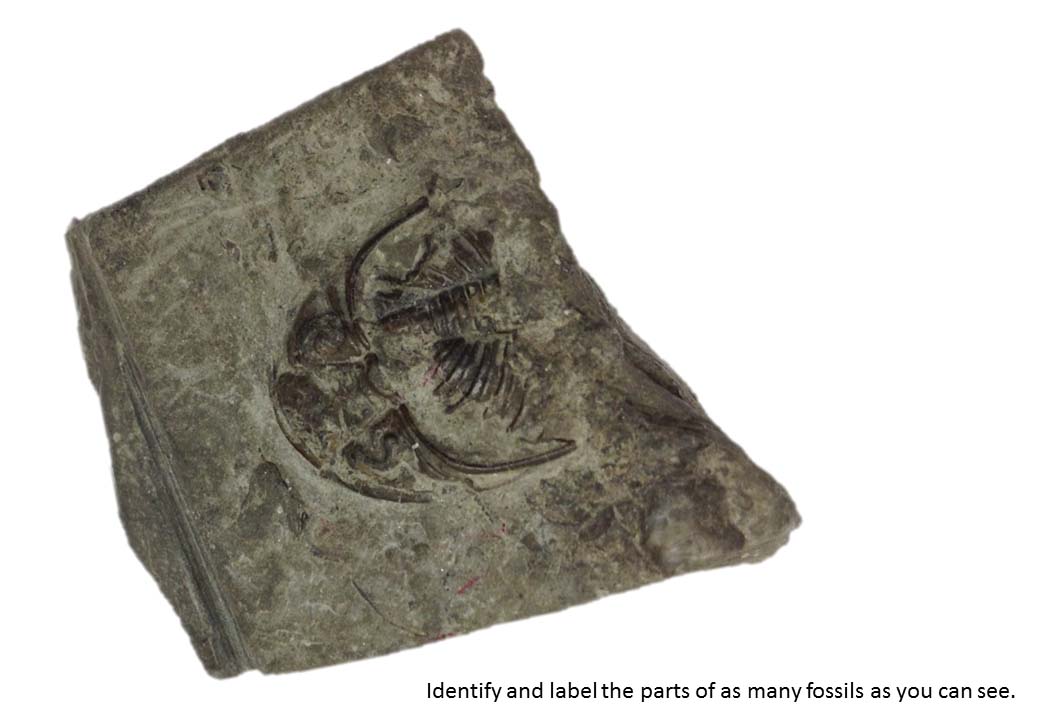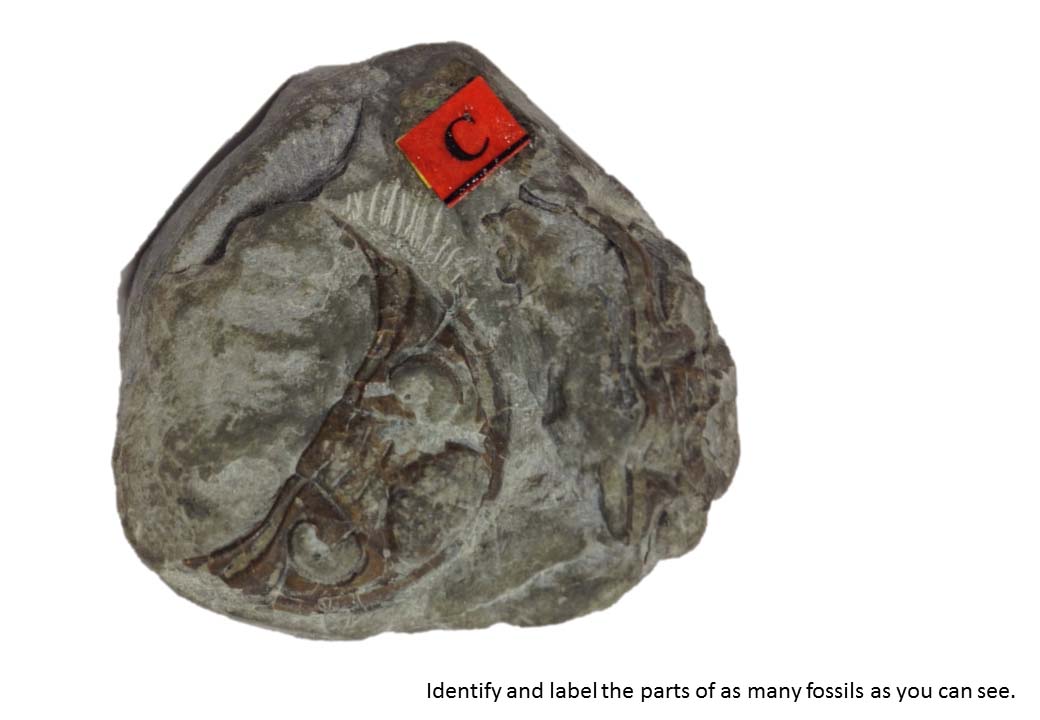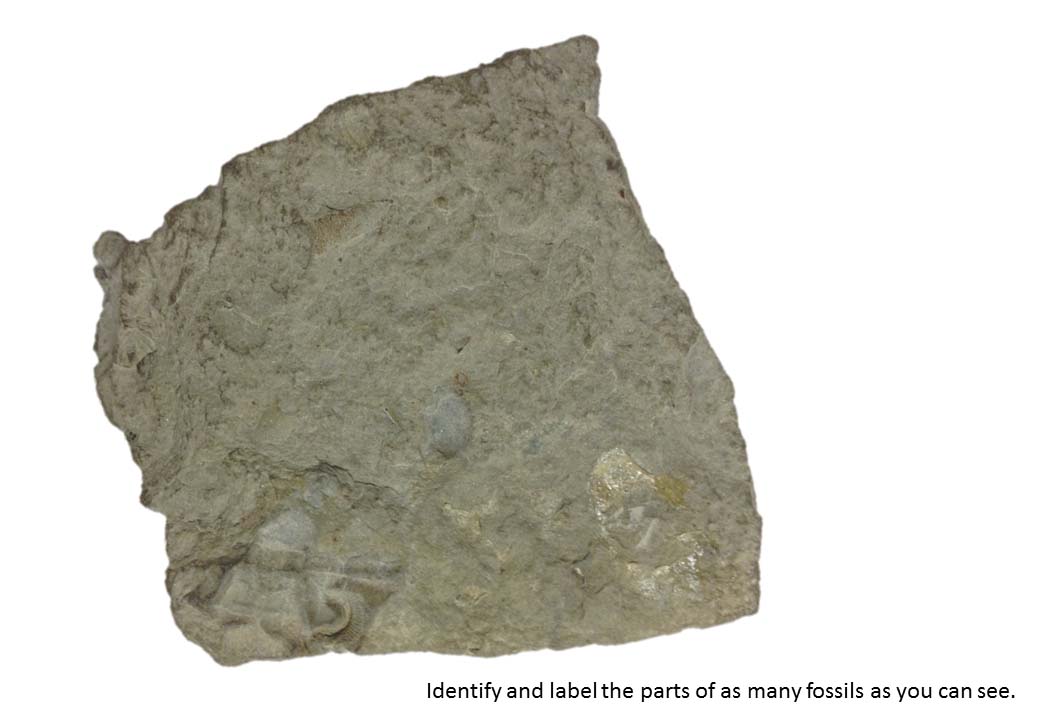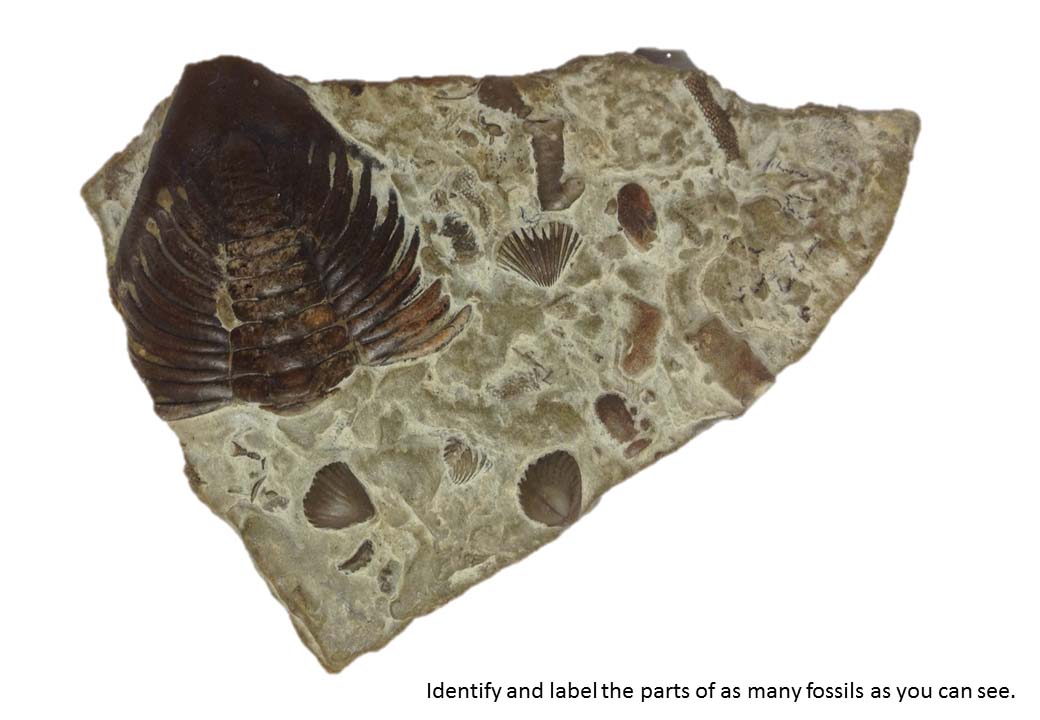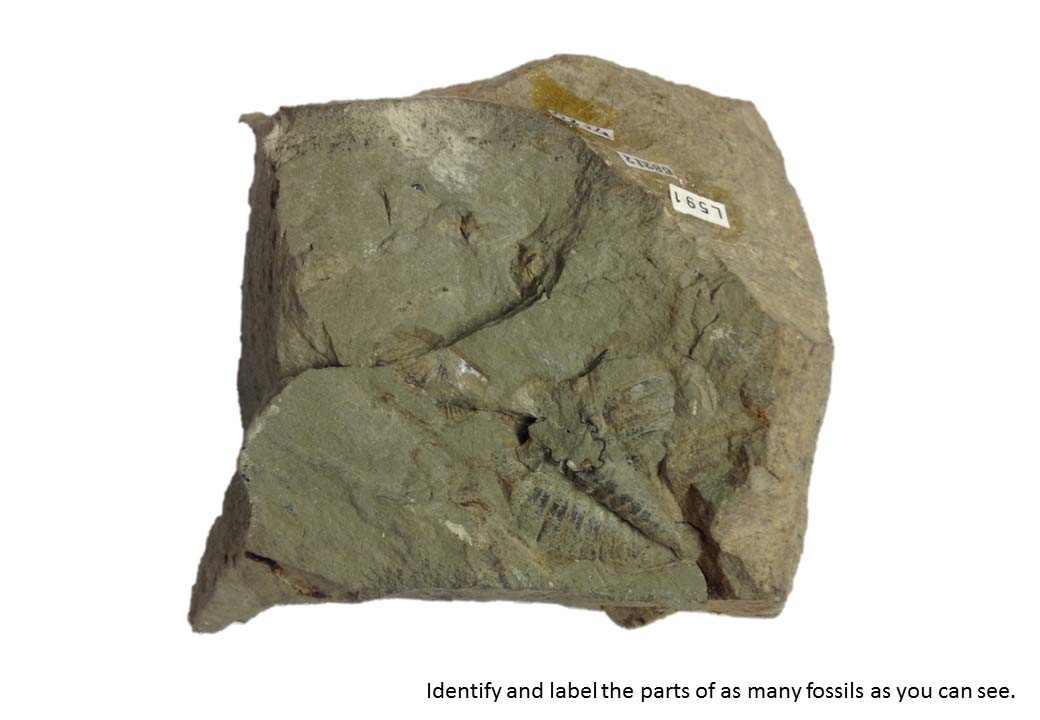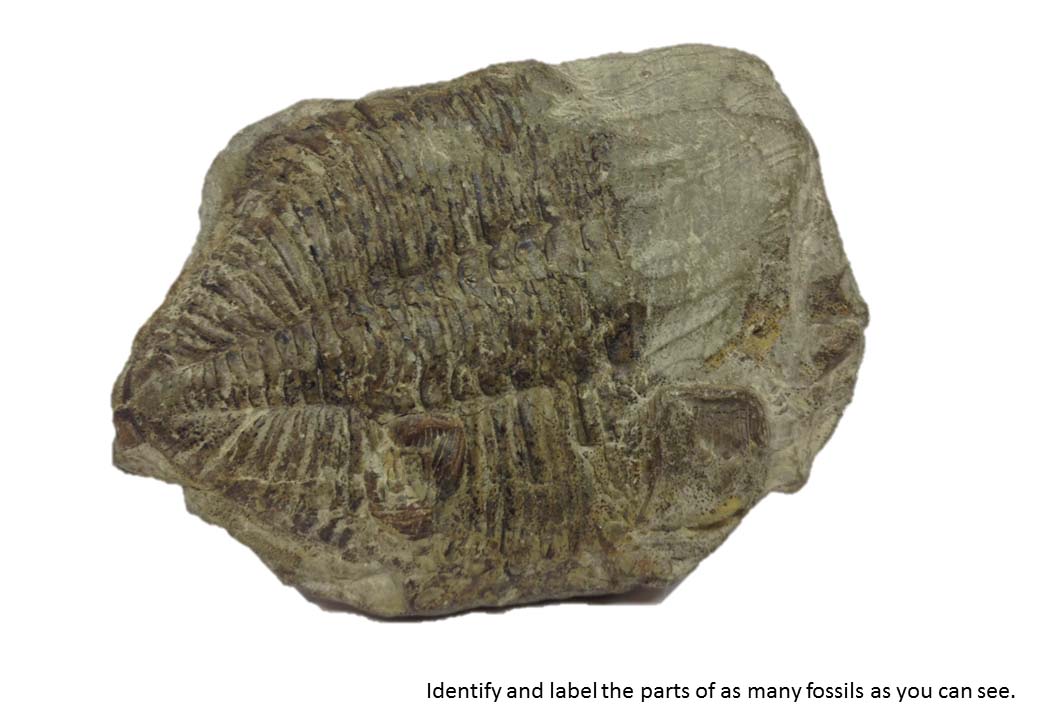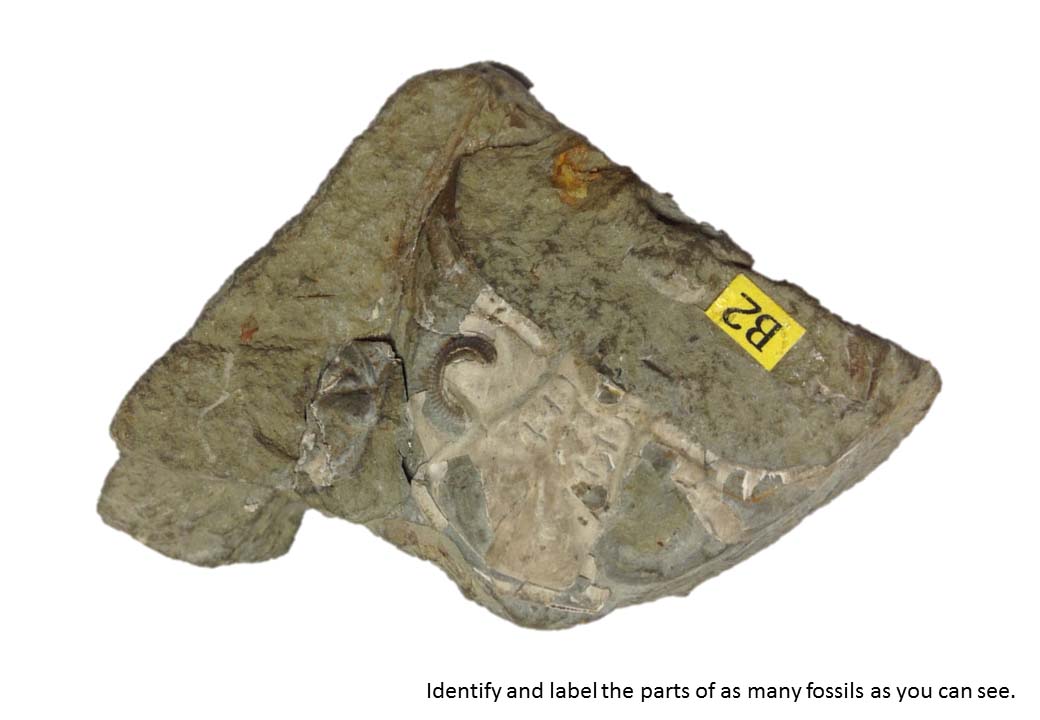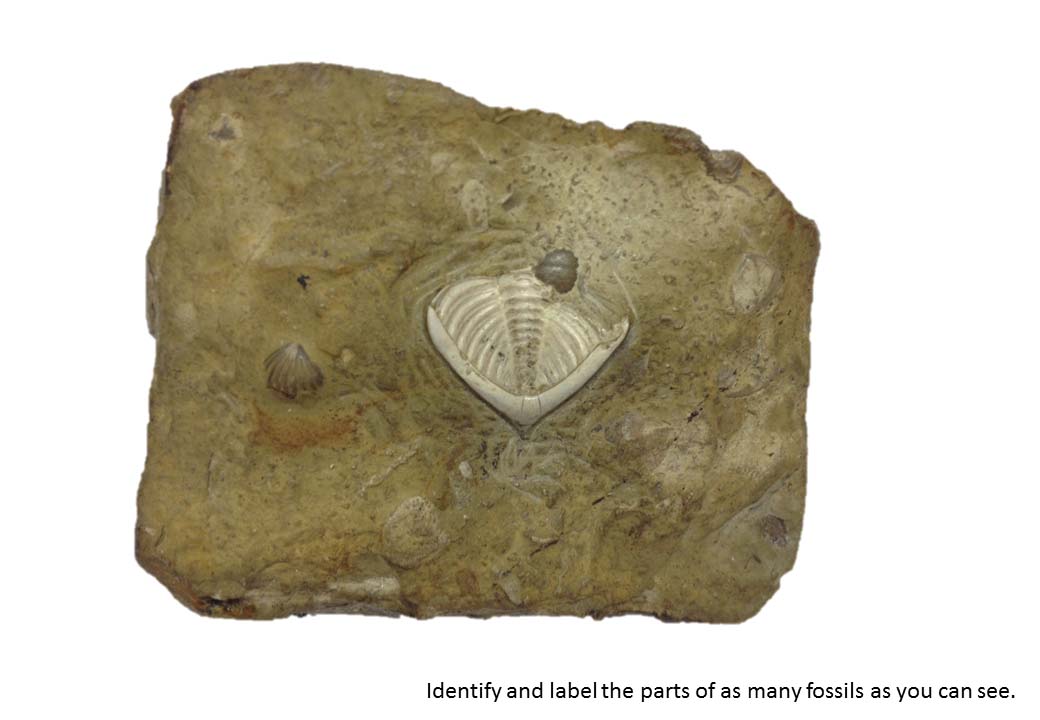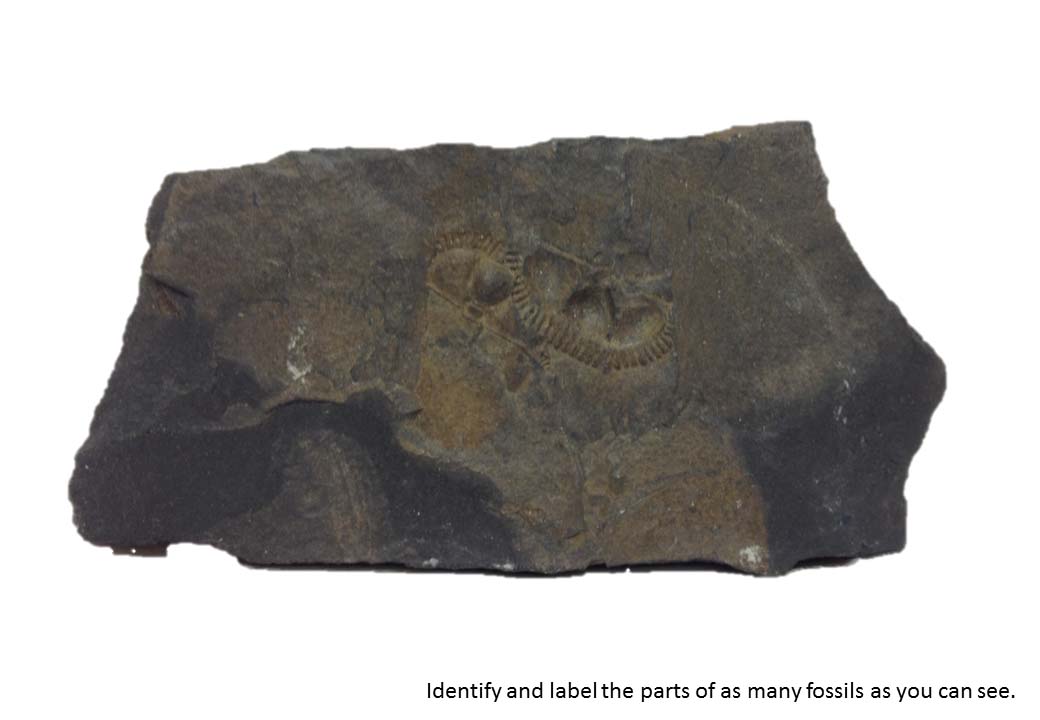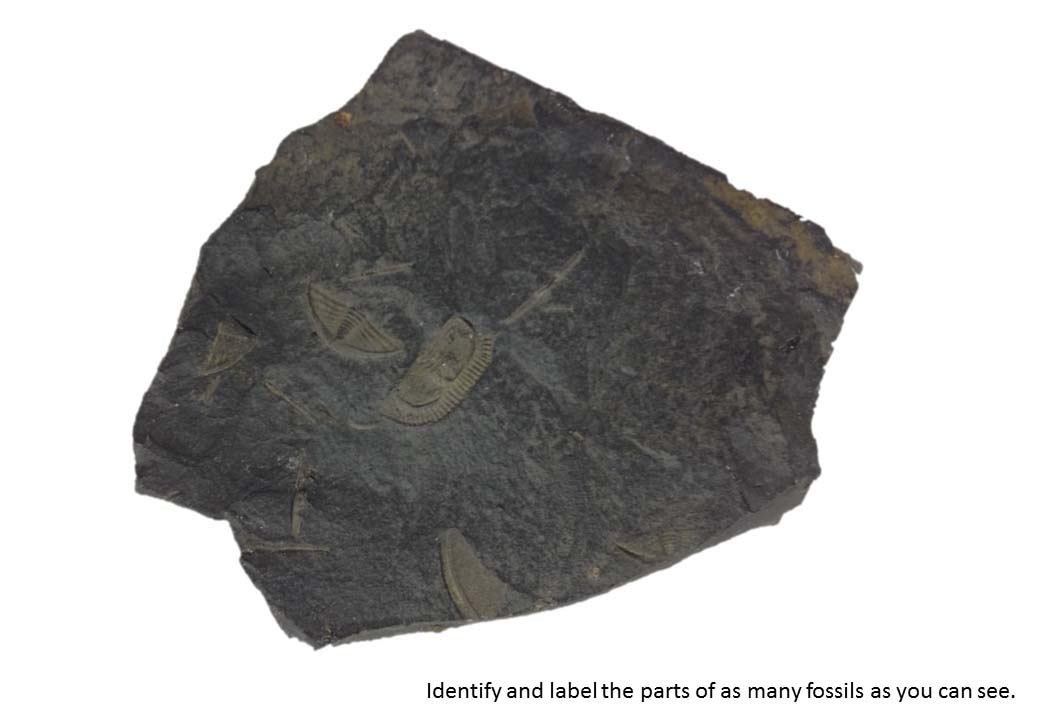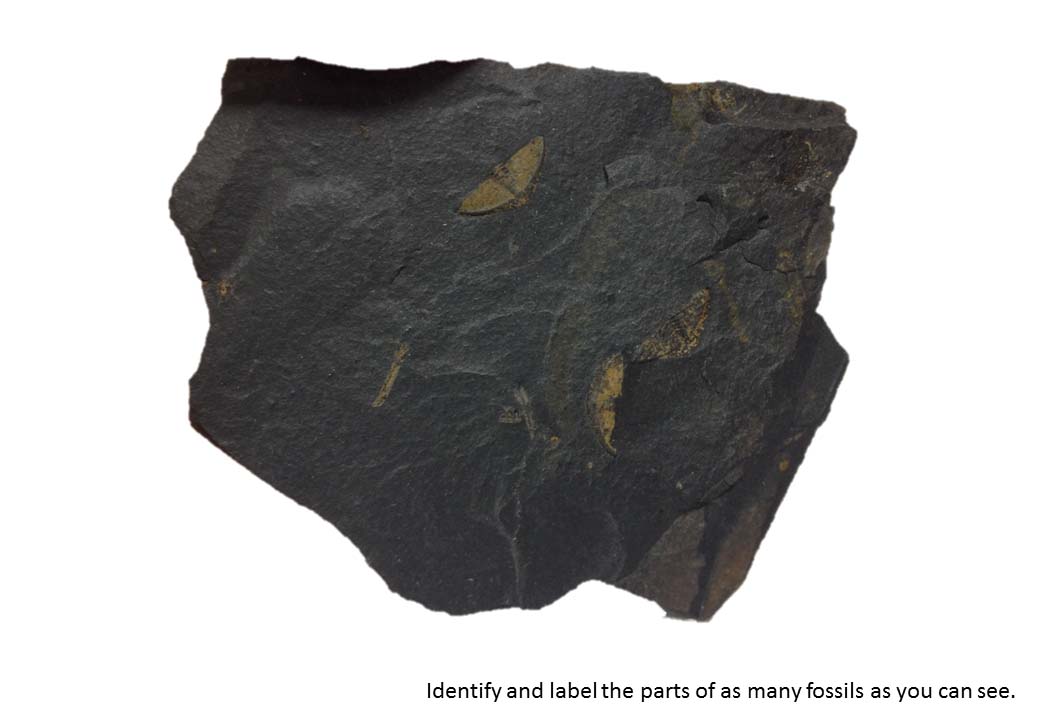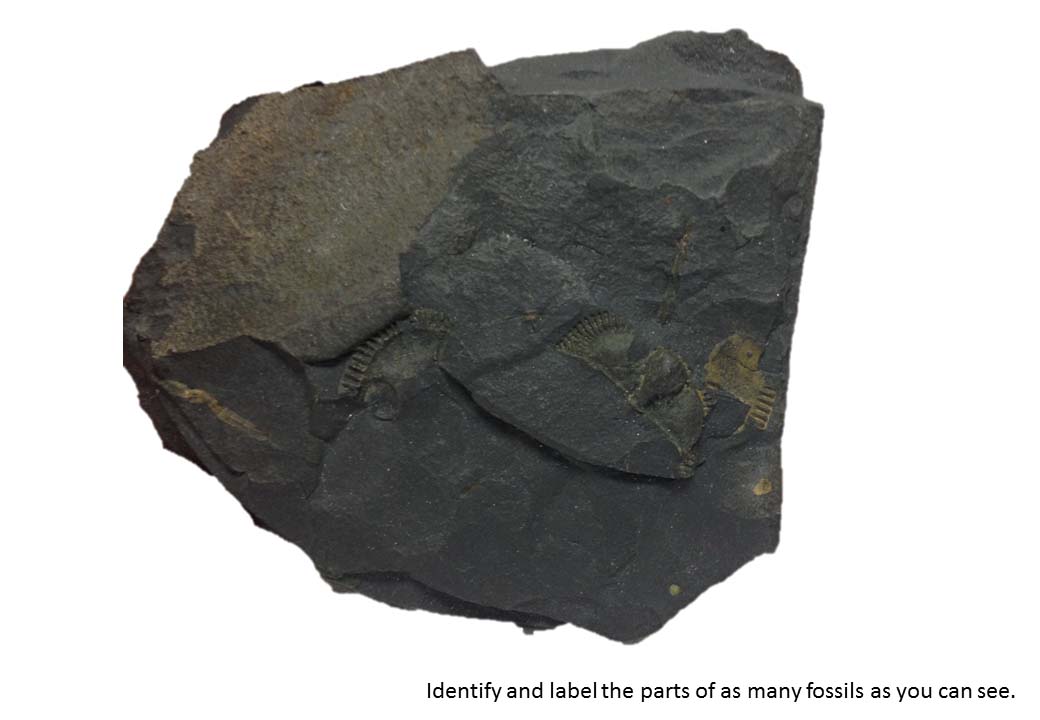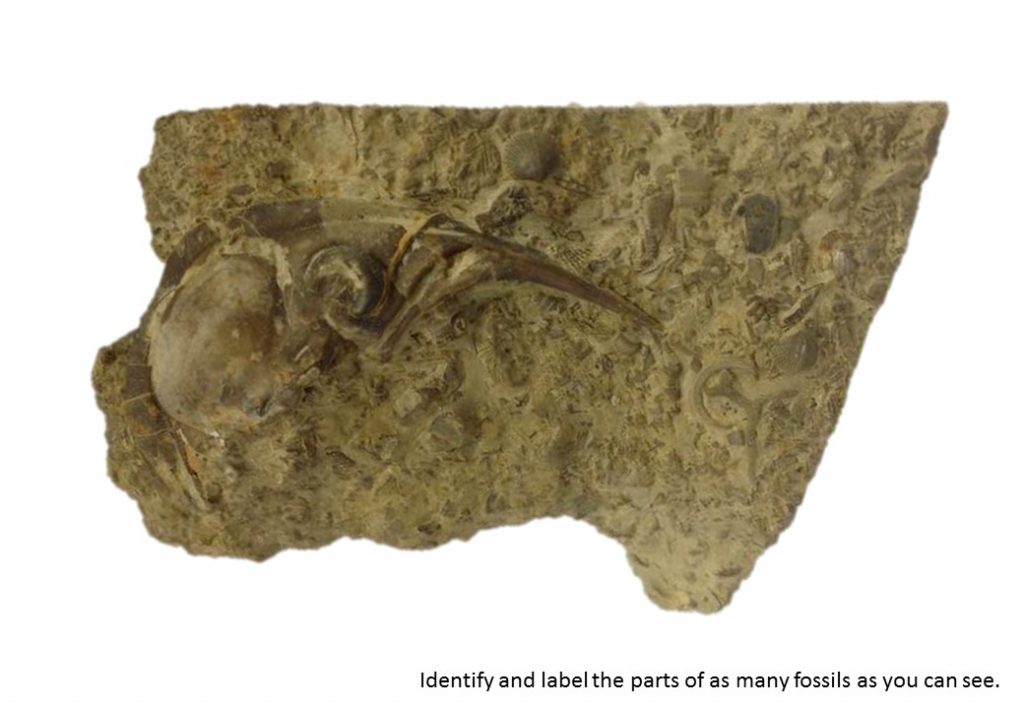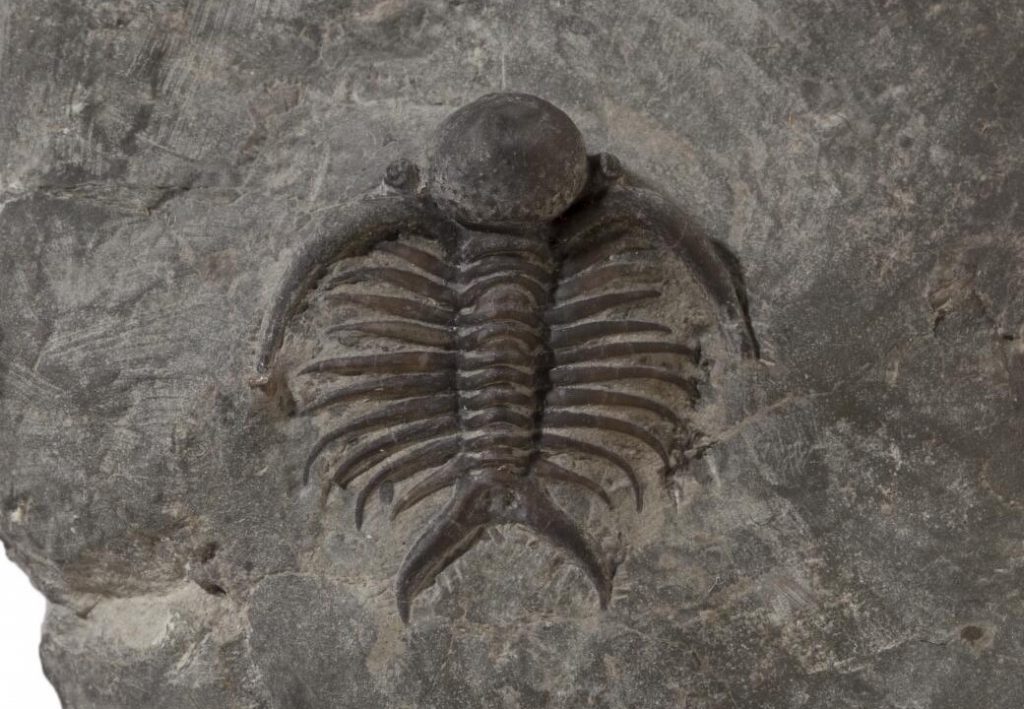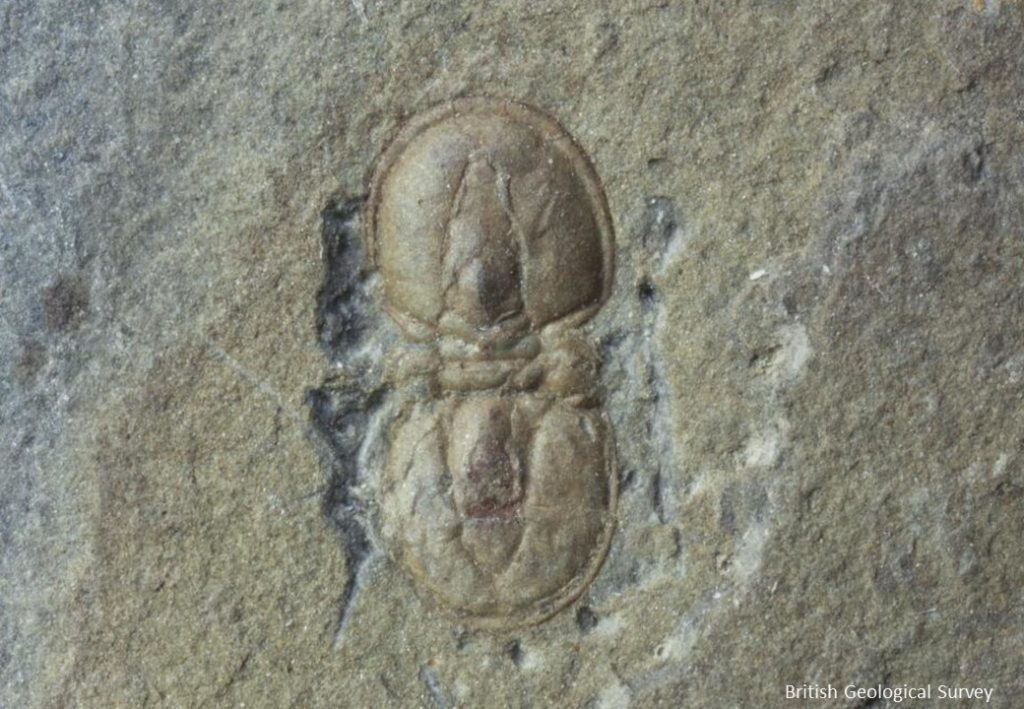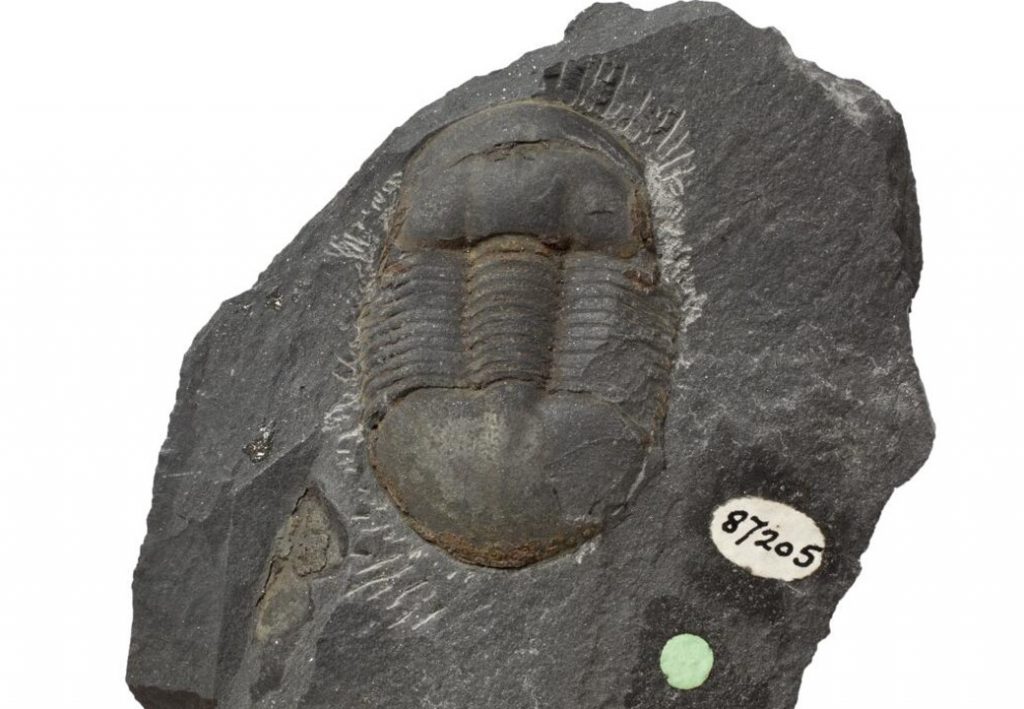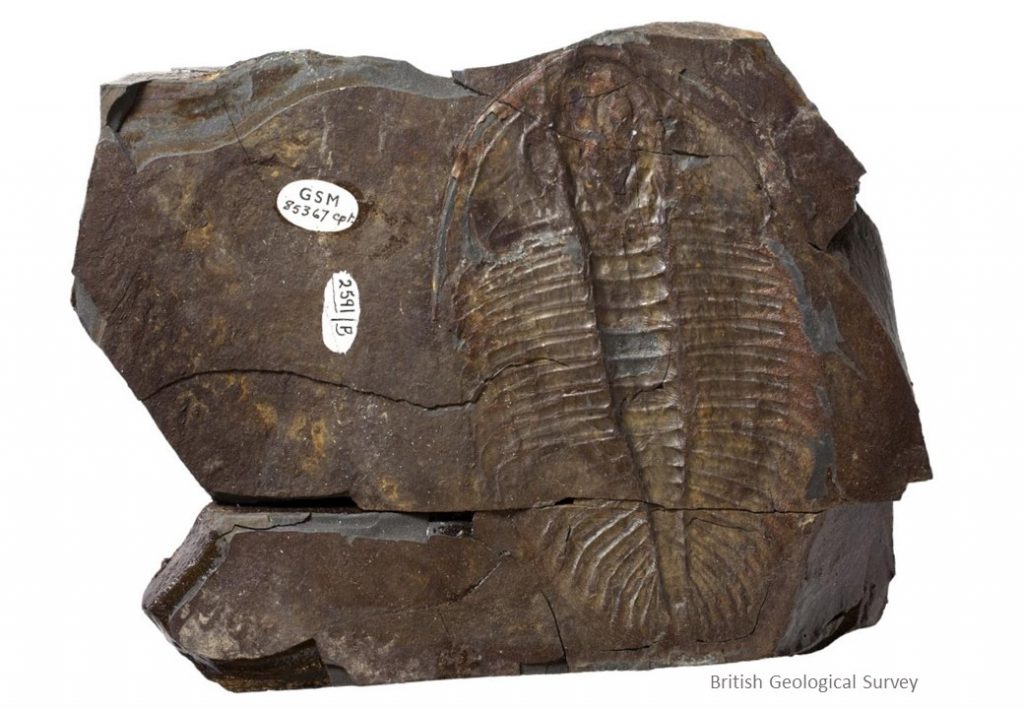Trilobites
The students are given a brief description of the geological time range of trilobites, and their affinity to other modern organisms. The diversity of this group is described, including their body sizes, various ecologies and habitats, and their geographical range.
Exercise 1 – Students draw an unlabelled trilobite with the teacher as she/he introduces morphological terms verbally. A high-quality reference specimen is available from Palaeocast.com. All the students will draw as you do, and the class will try and label the finished drawing after it is complete. As a group students help to apply labels to their drawings as they are added on the board.
As a group the students are then presented with three unlabelled trilobite specimens, the first of which is near complete, the second preserves only parts of the head, and the third preserves parts of the thorax and pygidium.
Exercise 2 – Students are now each given a photograph of a unique and realistic specimen, which may contain a part or, several parts of a trilobite(s). They are tasked with labelling as much as they can on their specimen, and individual feedback is given as they work.
After becoming familiar with morphology, the class will now discuss adaptations for different environments. It is effective to first engage students about what strategies would suit different lifestyles; what adaptations would you expect to find in an animal:
- that burrows deeply through sediment? (streamlined and narrow)
- that floats and swims in the water column? (fin-like projections, lightweight shape, large 360 ͒eyes)
- that grazes on the shallow seafloor (large eyes, woodlouse-shape)
- that ploughs soft sediment in deep water (small or no eyes, plough-like shape, snow-shoe support of long genal spines)
Exercise 3 – The students are then presented with a series of trilobite images, and as a group discuss the palaeoecology.
Points for discussion:
- Trilobite vision, and the shape of trilobite eyes
- Predatory, grazing and planktonic adaptations
- Moulting and the facial sutures of trilobites

